By Maya Betti, News Intern
In Northfield, one in four residents now turns to the Community Action Center (CAC) for help, whether for food, housing or financial support. But as federal nutrition programs now face cuts, the CAC is warning that the impact could ripple far beyond those most visibly in need, according to Senior Director Anika Richner.

“I think people often associate poverty with the federal poverty guideline, and so people who fall below the federal poverty guideline are eligible for things like SNAP benefits and other supports. But there’s a huge section of our community that doesn’t fall quite that low in income but still can’t afford their basic needs.” – Anika Rychner, Senior Director at the CAC on KYMN’s Something I Have Always Wondered About
As Rychner explains, anyone who spends more than 30% of their income on housing is cost-burdened, and often isn’t able to have savings to prepare for life’s emergency moments. United Way, a network of nonprofit organizations working to meet local needs, defines these households as ALICE: Asset Limited, Income Constrained, Employed.
They make up a growing portion of CAC’s clientele — and as food aid tightens, Project Manager Lisa Percy says the food shelf is already feeling the pressure.
“We’ve seen the variety of food and the amount of food that we’re able to reach to source has changed.” – Lisa Percy, Project Manager at the CAC on KYMN’s Something I Have Always Wondered About
Much of CAC’s food supply comes from regional food banks like Channel One in Rochester. These banks are partially funded by federal and state programs — and when their support drops, food shelves like CAC face higher prices, fewer options, and increased delivery costs.
With proposed cuts to programs like the Supplemental Nutrition Assistance Program, or SNAP, which helps low-income individuals and families buy groceries, and the Emergency Food Assistance Program, or TEFAP, a federal initiative that provides free emergency food to those in need, Rychner explains that CAC will only have more hurdles to climb.
“There’s a lot of decisions being made about supplemental nutrition assistance programs, SNAP program which would impact not only the people that CAC serves that are in need of food, but we also receive funding to provide outreach to help people sign up for SNAP. And so that could be kind of a two fold impact,” – Anika Rychner, Senior Director at the CAC on KYMN’s Something I Have Always Wondered About
In the case of TEFAP, the CAC anticipates having to spend more on food because there won’t be enough “free commodity food” available — that is, government-provided food distributed at no cost to help stock food shelves.
What happens next will depend on how things roll out at the federal level, but locally, the CAC is already adjusting — planning for a future where doing more with less is the standard.
Newscasts on KYMN air on weekdays at 6am, 7am, 8:30am, Noon, 3pm, and 5pm. If you miss it live, you can subscribe on your preferred podcast app:
> Click here to listen on Spotify
> Click here to listen on Apple Podcast
Do you have a news tip or press release? Send it to us email: Logan@kymnradio.net

